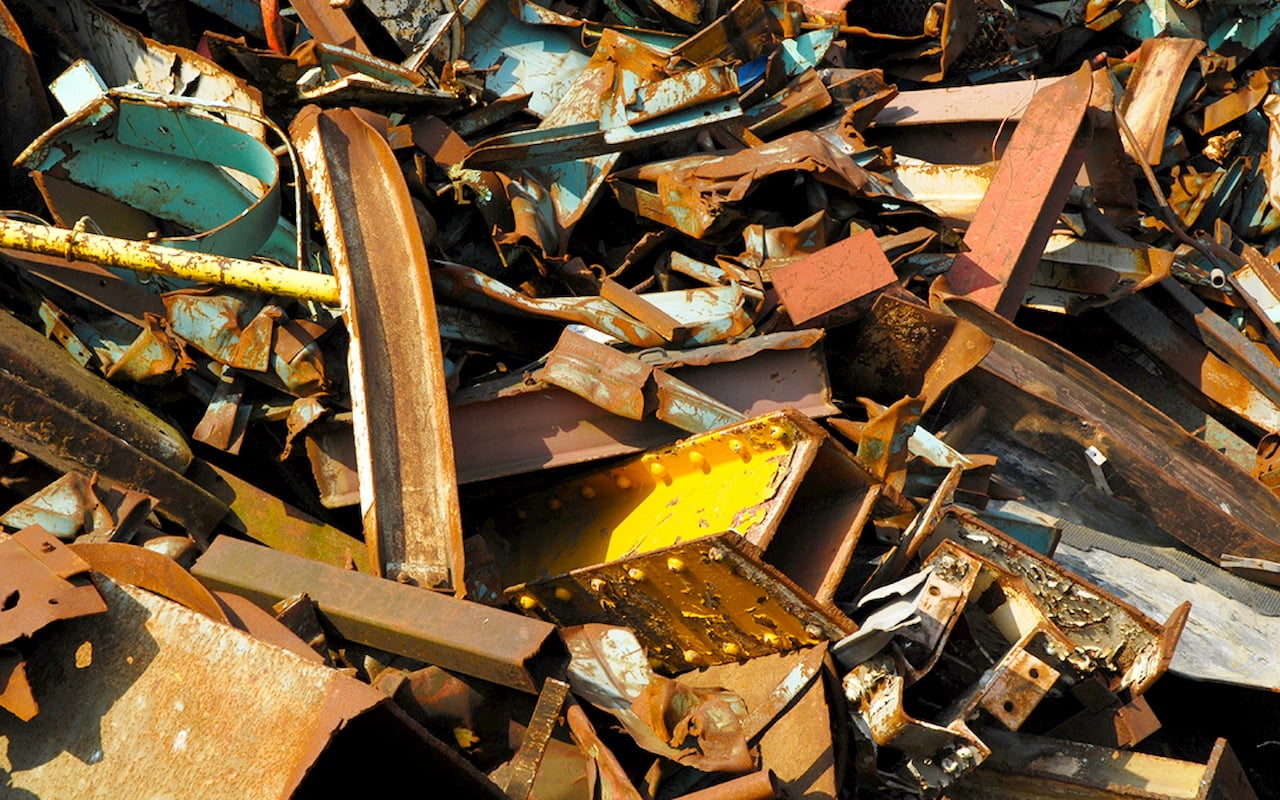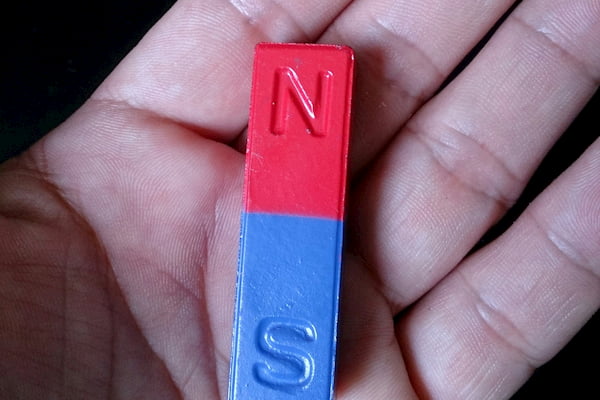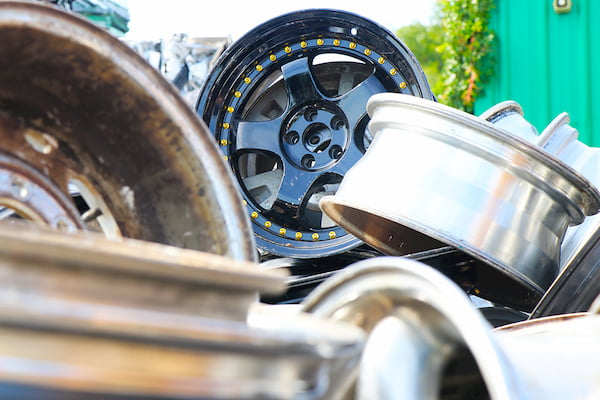
The best scrap metal tools aren’t always what you’d expect. The tools you’ll want the most when starting are a magnet and a five-gallon bucket. But once you get going, this list of recycling tools is far and away, the best tools for the job.
We broke it all down by the which scrapping tools you’ll need for each step of the way. Once you have these tools, you can break down just about anything. The best part is some of these tools are probably already in your toolbox.
Safety Equipment
First things first before you begin scrapping your metal you need to make sure you have all of the important personal protective equipment (PPE). To prevent any injuries you first want to ensure you are wearing protective clothing. This means long pants and sleeves with thick material to protect your skin.
Then you want to get out some work gloves to protect your hands from knicks and to help prevent calluses. Additionally, you will want to wear steel-toed shoes and metatarsal guards. Finally, you want to make sure you have goggles. When breaking down metals, fragments can fly off and hit you in the face and possibly scratch your eyes.
Make sure you understand the risks involved, and the need to collect scrap metal in a responsible manner.
Inspecting Scrap
Before you start working on your scrap, it’s best to find out what material you have on your hands. The quickest and easiest way to tell if your metal is ferrous or non-ferrous is by using a magnet. Ferrous metals will cause your magnet to stick, but you should follow our guide for your non-ferrous scrap

A metal file, on the other hand, is one of the best scrap metal tools to check for ‘plating.’ Most metals nowadays have a separate coating on the outside to protect them from the elements or shocking and electrocuting anyone standing too close–when the power is on, of course. To protect the metal inside, companies will often use plastic or chrome. Still, they sometimes use other non-ferrous metals like copper.
By using a file, you can grind down the top layer and make sure you’ve got the right metal all the way through.
Basic Dismantling
When taking apart old equipment for scrap, often, the best scrapping tools are a cordless drill, an impact wrench, and WD-40. Unscrew and disassemble the parts with your drill, and use the wrench when necessary.
Often though, equipment old enough to be turned into scrap is tight and rusted, and a hand wrench isn’t enough to cut it, even with WD-40. An impact wrench, on the other hand, has far more torque than a single person and can make the hours-long job take just a few minutes.
When It’s Well and Truly Stuck
Unfortunately, sometimes even that isn’t enough, and you may need the force of a sledgehammer to throw it out of position just enough to add WD-40 in there.
A Standard claw hammer isn’t a good option when dealing with scrap metal. Because the handle is so short, and the head is so small, you’re more likely to sprain your wrist using a claw hammer than getting your scrap to move.
Of course, you may need to wriggle out the remains of old screws or hold your scrap in place before you start hitting it with a sledgehammer. C-Clamps and Pliers are your best bet for saving your hands and your wrists.
Dealing with Wires
Most wiring that you’ll find when scrapping has plastic tubing on the outside of them. One of the best recycling tools to use for this is Wire Strippers. For larger and longer wires, use a wire cutter for breaking down old wiring for scrap metal. Although you do not have to worry about this because GLE Scrap will strip your wires for you, saving you lots of time on more important things.
Moving Bulk Scrap
Often, you can’t get enough scrap in one place, or you can’t start stripping everything down to brass tacks on-site. Because of this, your most crucial scrap metal tools will always be a truck and a set of ratchet straps.

Of course, there’s always small and loose scrap. When gathering smaller pieces and wiring, your best friend is a Five Gallon Bucket. They’re cheap, they last a long time, and you don’t have to worry about them falling apart while you’re working.
If you’ve been at it a while and have some extra cash, you can start to haul off bulky scrap with these recycling tools: a hand truck and a portable winch. When dealing with anything you can’t lift off the ground, a hand truck and a portable winch will help you at least get it into the truck where you can break it down later. Just make sure your vehicle can handle the weight before you break your suspension.
Breaking Down Large Scrap
Once you’ve hauled off your scrap and you’re ready to take apart heavy, bulky scrap, you’ll want a cordless sawzall and a crowbar. While you may want to bring the sledgehammer back into play, going to more advanced tools than this is seriously putting yourself at risk.
If you have a large amount of heavy, bulky scrap, it’s probably time to call a pickup instead. Steel beams or an aluminum awning may be too broad or misshapen to fit into your truck and take it to the recycling center. But you probably don’t have an industrial vehicle that can haul more than 2,000 pounds of scrap metal like GLE.
GLE Scrap Metal
Once you’ve broken down your metals with your scrapping tools, it’s time to take it all to a recycling center. GLE Scrap Metal has locations in Michigan and Florida. It serves the surrounding states for industrial, commercial, and consumer metals recycling. If you’re ready to turn your scrap in, give us a call at 855-727-2788.



